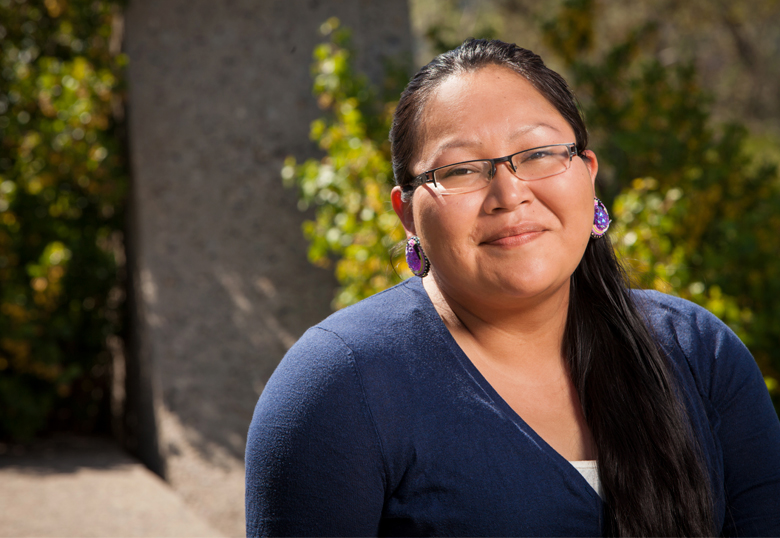As the first graduate of the Bachelor of Fine Arts - Native American Art program, Joel Cross Child has sculpted a promising future, one she hopes will inspire First Nations youths toward post-secondary education.
As the youngest of four children, Joel knew she would follow in the footsteps of her mother, Delia, and her three siblings and attend the University of Lethbridge. After graduating from Kainai High School and being the valedictorian of her class, Cross Child began her studies in the Faculty of Management. Math was one of her top subjects in high school and she was considering becoming an accountant. When she signed up for some fine arts courses, little did she know it would change the course of the future she had imagined for herself.

“I took two art classes with Tanya Harnett and right away she tried to convince me to change my major. I was still unsure so I took another art class, a photography class with David Miller, and he also tried to convince me to change my major,” says Cross Child. “I gave it some thought and started taking more art classes. I knew this BFA - Native American Art program was in the works and I signed up as soon as it was a sure thing.”
Bit by bit, Cross Child learned to trust that her instructors saw something in her she couldn’t see herself. As her artistic skills grew and her learning expanded, she also gained confidence.
“Overall, my experience was amazing. I’ve learned not only academically but I’ve learned a lot about myself and what I want to do, where I want to go with my life and the possibilities that are there,” she says.
Looking back on her academic journey at the U of L, Cross Child admits she encountered choppy waters more than once. She took some time off from her studies after an injury, and deaths in her family also stopped her for a time.
“I pushed through. I talked to friends and my family — my siblings have all been through this and they all graduated — and they told me I would get through it,” she says.
Cross Child also developed a support network on campus by joining the Native American Students’ Association. The best reward she received for her involvement on the association’s council was being able to help students during stressful times.
“It’s good that we have a close community and can find that support within our peers. I think that’s what I really loved about the university,” she says. “The classroom sizes are small enough that you can meet your professor and he or she will remember you.”
The BFA in Native American Art allowed Cross Child to learn First Nations history in more depth and that, in turn, provided insight into the antecedents of current issues that affect First Nations communities. Cross Child learned to work in several mediums during her time in the program, including photography, sculpture and bronze casting. The Native Student Advising office even bought one of her photos to use in their promotional material.
“I’m actually quite proud and I’m really grateful to be the first person to graduate from this program,” she says. “One of my main reasons for getting a degree is to find a way to go back and help my community in any way, shape or form. Getting this degree opens so many doors not only for me, but also for those following me. That’s who I have in mind, the youth who are coming, especially from my reserve.”
Cross Child plans on continuing her studies as a graduate student, with the ultimate goal of teaching at the post-secondary level. Regardless of whether she chooses to focus in art history or in a studio program, working with Aboriginal content will always be important.
“It gives me a voice to what I’m thinking about, to what affects me in my everyday life as a Native American woman,” she says. “I think it’s a way to bridge the gaps between cultures and between people. Art has that potential because it allows space for dialogue and for questions. How are we going to overcome our differences if we don’t know about each other?”
